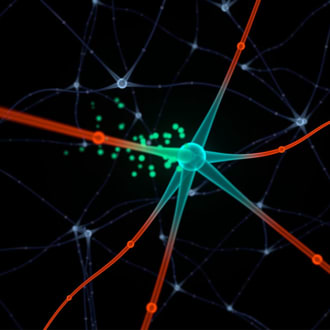
10 Best Articles on Neural Networks
The most useful articles on neural networks from around the web, curated by thought leaders and our community.
Refind focuses on timeless pieces and updates the list whenever new, must-read articles or videos are discovered.
Top 5 Neural Networks Articles
At a glance: these are the articles that have been most read, shared, and saved on neural networks by Refind users in 2024 so far.
Short Articles
Short on time? Check out these useful short articles on neural networks—all under 10 minutes.
Study urges caution when comparing neural networks to the brain
Neuroscientists often use neural networks to model the kind of tasks the brain performs, in hopes that the models could suggest new hypotheses regarding how the brain itself performs those tasks. But…
Multimodal Neurons in Artificial Neural Networks
We’ve discovered neurons in CLIP that respond to the same concept whether presented literally, symbolically, or conceptually.
Someone used neural networks to upscale a famous 1896 video to 4k quality
Machine-learning software fills in missing details to produce realistic images.
Software 2.0
I sometimes see people refer to neural networks as just “another tool in your machine learning toolbox”.
Techniques for Training Large Neural Networks
Large neural networks are at the core of many recent advances in AI, but training them is a difficult engineering and research challenge which requires orchestrating a cluster of GPUs to perform a…
Long Articles
These are some of the most-read long-form articles on neural networks.
Artificial Neural Nets Finally Yield Clues to How Brains Learn
The learning algorithm that enables the runaway success of deep neural networks doesn't work in biological brains, but researchers are finding alternatives that could.
Intuitively, How Do Neural Networks Work?
The term “Neural Networks” may seem mysterious, why is an algorithm called Neural Networks? Does it really mimic real neurons, and how?
How do Neural Networks really work?
Neural networks are a subset of machine learning. People exposed to artificial intelligence generally have a good high-level idea about it.
Deep Neural Networks Help to Explain Living Brains
Deep neural networks, often criticized as “black boxes,” are helping neuroscientists understand the organization of living brains.
The Neural Network Zoo
With new neural network architectures popping up every now and then, it’s hard to keep track of them all. Knowing all the abbreviations being thrown around (DCIGN, BiLSTM, DCGAN, anyone?) can be a bit overwhelming at first. So I decided to compose a cheat sheet containing many of those architectures. Most of these are neural networks, some are completely […]
What is Refind?
Every day Refind picks the most relevant links from around the web for you. Picking only a handful of links means focusing on what’s relevant and useful.
How does Refind curate?
It’s a mix of human and algorithmic curation, following a number of steps:
- We monitor 10k+ sources and 1k+ thought leaders on hundreds of topics—publications, blogs, news sites, newsletters, Substack, Medium, Twitter, etc.
- In addition, our users save links from around the web using our Save buttons and our extensions.
- Our algorithm processes 100k+ new links every day and uses external signals to find the most relevant ones, focusing on timeless pieces.
- Our community of active users gets the most relevant links every day, tailored to their interests. They provide feedback via implicit and explicit signals: open, read, listen, share, mark as read, read later, «More/less like this», etc.
- Our algorithm uses these internal signals to refine the selection.
- In addition, we have expert curators who manually curate niche topics.
The result: lists of the best and most useful articles on hundreds of topics.
How does Refind detect «timeless» pieces?
We focus on pieces with long shelf-lives—not news. We determine «timelessness» via a number of metrics, for example, the consumption pattern of links over time.
How many sources does Refind monitor?
We monitor 10k+ content sources on hundreds of topics—publications, blogs, news sites, newsletters, Substack, Medium, Twitter, etc.
Can I submit a link?
Indirectly, by using Refind and saving links from outside (e.g., via our extensions).
How can I report a problem?
When you’re logged-in, you can flag any link via the «More» (...) menu. You can also report problems via email to hello@refind.com
Who uses Refind?
450k+ smart people start their day with Refind. To learn something new. To get inspired. To move forward. Our apps have a 4.9/5 rating.
Is Refind free?
Yes, it’s free!
How can I sign up?
Head over to our homepage and sign up by email or with your Twitter or Google account.
Keep Learning
Get the big picture on your favorite topics.









